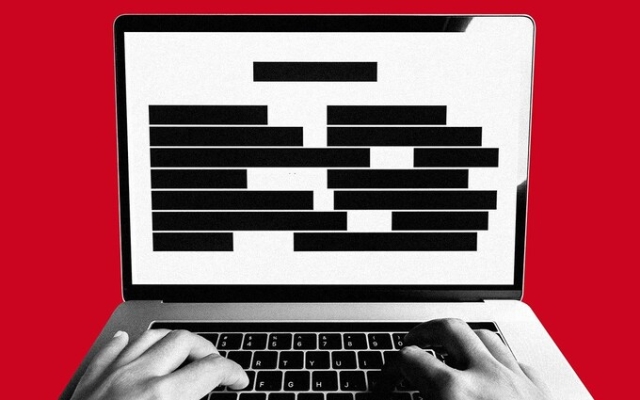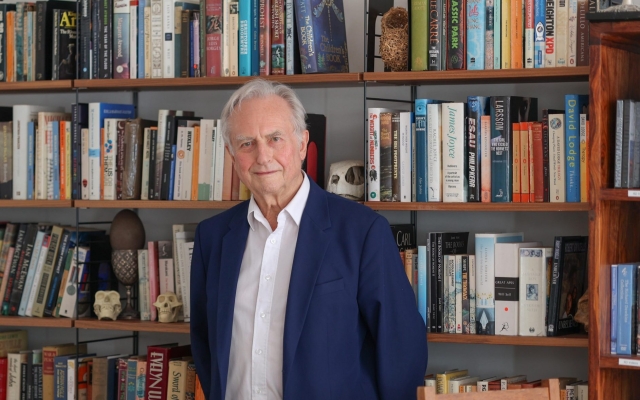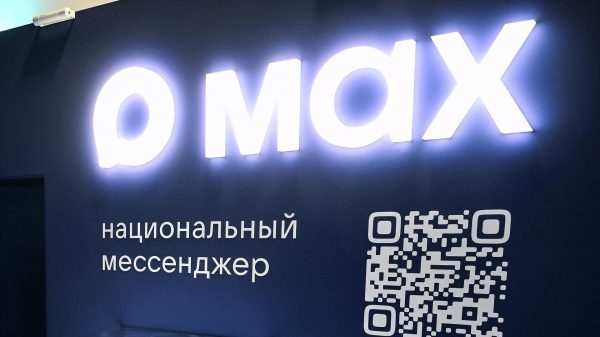
When Bari Weiss launched a Substack profile following her abrupt departure from The New York Times, she hailed the new venture as «the newspaper of the 21st century» .”
Weiss, who has been embroiled in a free speech dispute with the left-wing publication, has joined a wave of prominent journalists and writers who have signed up for the newsletter, which offers users a platform to publish their work.
p>Since its inception in 2017, the San Francisco-based company has ridden the “new media” wave and cemented its place in the cultural and political consciousness. However, it is now experiencing perhaps the greatest crisis in its short history.
Substack this week removed several pro-Nazi newsletters from its site following a backlash from writers, marking a downturn in an escalating row over censorship. .
The move caused controversy. Some took the fascination with Nazi content as the last straw and switched sides to their rivals. Others complained that bosses had broken their promises to provide truly free speech.
But at its core, the scandal exposed the shortcomings of Substack's apparently frivolous editorial approach. So now, faced with a possible outcome, the company must answer fundamental questions about its role in the modern media landscape.
 Bari Weiss launched Substack after leaving the New York Times. Photo: Dan Callister
Bari Weiss launched Substack after leaving the New York Times. Photo: Dan Callister
«I think there's an issue here about where Substack wants to be,» says media analyst Ian Whittaker. “It produces great content, but like all platforms, it needs credibility to attract creators and get people to pay.”
For writers, Substack's appeal is obvious. As social media has allowed well-known journalists and commentators to develop a personal brand, the newsletter service has in turn allowed them to make money.
Authors can charge a subscription fee of at least $5 (£3.93) per month, which means the most popular newsletters can earn millions of dollars per year. Substack typically charges a 10% commission per subscription.
The platform also gives authors an easy way to directly connect with their readers. Telegraph columnist and former Guardian journalist Suzanne Moore, who has more than 17,000 subscribers on Substack, says it's «very liberating for some writers because most of us are so useless at technology and business.»
However, for For many, one of the main attractions is the freedom that Substack's casual editorial stance allows.
While the website prohibits content that incites violence, is harmful or illegal, it largely takes a hands-off approach. , boasting that it «accepts and celebrates a wide variety of thought and debate.»
However, this loose policy has come under scrutiny in recent months after it was revealed that far-right writers were publishing overtly Nazi ideology and symbols . on the website.
Substack initially resisted pressure to remove the offensive newsletters, insisting it would not censor. More than a hundred writers, including Weiss and Richard Dawkins, supported the company's refusal to abandon its free speech policies.
But in the face of a growing rebellion from a larger group of writers that included author Margaret Atwood, Substack on this week agreed to remove five pro-Nazi newsletters, acknowledging that they did violate its rules.
The company said in a statement: “We are actively working on additional reporting tools that can be used to flag content that potentially violates our rules, and we will continue to work on custom moderation tools to allow Substack users to set and clarify the terms of their own experience on the platform.” «.
 Free speech activist Richard Dawkins is one of many writers who have come out in support of Substack maintaining its original position. Photo: John Lawrence
Free speech activist Richard Dawkins is one of many writers who have come out in support of Substack maintaining its original position. Photo: John Lawrence
However, the scandal is far from over. Some famous writers have already defected to competitors like Buttondown. Platformer, an influential tech newsletter that has led the campaign against Nazi content, said it was continuing to consider its position.
For Substack, the threat of an exodus of writers will be a concern. The company does not disclose information about its finances, but there are hints at a high level of cash burn.
Substack, which is backed by major Silicon Valley investors including Andreessen Horowitz, spent $25 million in just 12 months in 2021 and has reportedly struggled to raise funds amid a broader tech downturn. Last year, the company attempted to raise $5 million directly from its creators.
While tech companies are accustomed to spending money to build a user base, an exodus of writers could derail a newsletter service's growth story and wreak havoc. hopes for future investment.
More fundamentally, however, the saga has exposed the dilemma facing Substack about what role it plays in the publishing world.
Ideally, the company wants to simply be a technology provider for independent publishers, engaging only in moderation that is required by law. This allows for maximum business with minimal liability.
“Compared to social media or TV channels, the harm of allowing extremist content on Substack is less because people are not finding newsletters on Substack,” says Joe Tisdale of Substack. . Enders' analysis. “Essentially, it simply provides publishing, communications and payment services.”
However, the flip side of the coin is that this easy approach makes it easier for users to betray. Substack's offering isn't unique, so frustrated writers have little incentive to stick around.
«It's the flip side of 'with great power comes great responsibility,'» Tisdale adds. «Substack is not responsible for its content, but therefore has no right to resist the boycott.»
As a result, Substack may have to become more like a social networking site, allowing readers and writers to find each other and thus encouraging users to stay on the platform.
There are signs that the company is already moving towards this . this is the direction. Last year, the company launched Notes, a social media-style text feed much like Twitter.
However, by recommending content to users, Substack risks treading into publisher territory, leaving the publisher responsible for the content it posts.< /p>
So now that writers are arguing over moderation, Substack must decide which path to take. Will it maintain its free speech platform model, similar to Elon Musk's problematic X, or abandon those ideals and take a new position in the social media sphere?
Whittaker, a media analyst, argues that the company should focus on gaining trust and leaving the “anything goes” policy to Musk.
Moore agrees. “This is a utopian idea that everything remains free and uncontaminated by some of the extremist politics that surround us. This is impossible,” she says. “[Substack] should be the anti-Twitter.”


























































Свежие комментарии